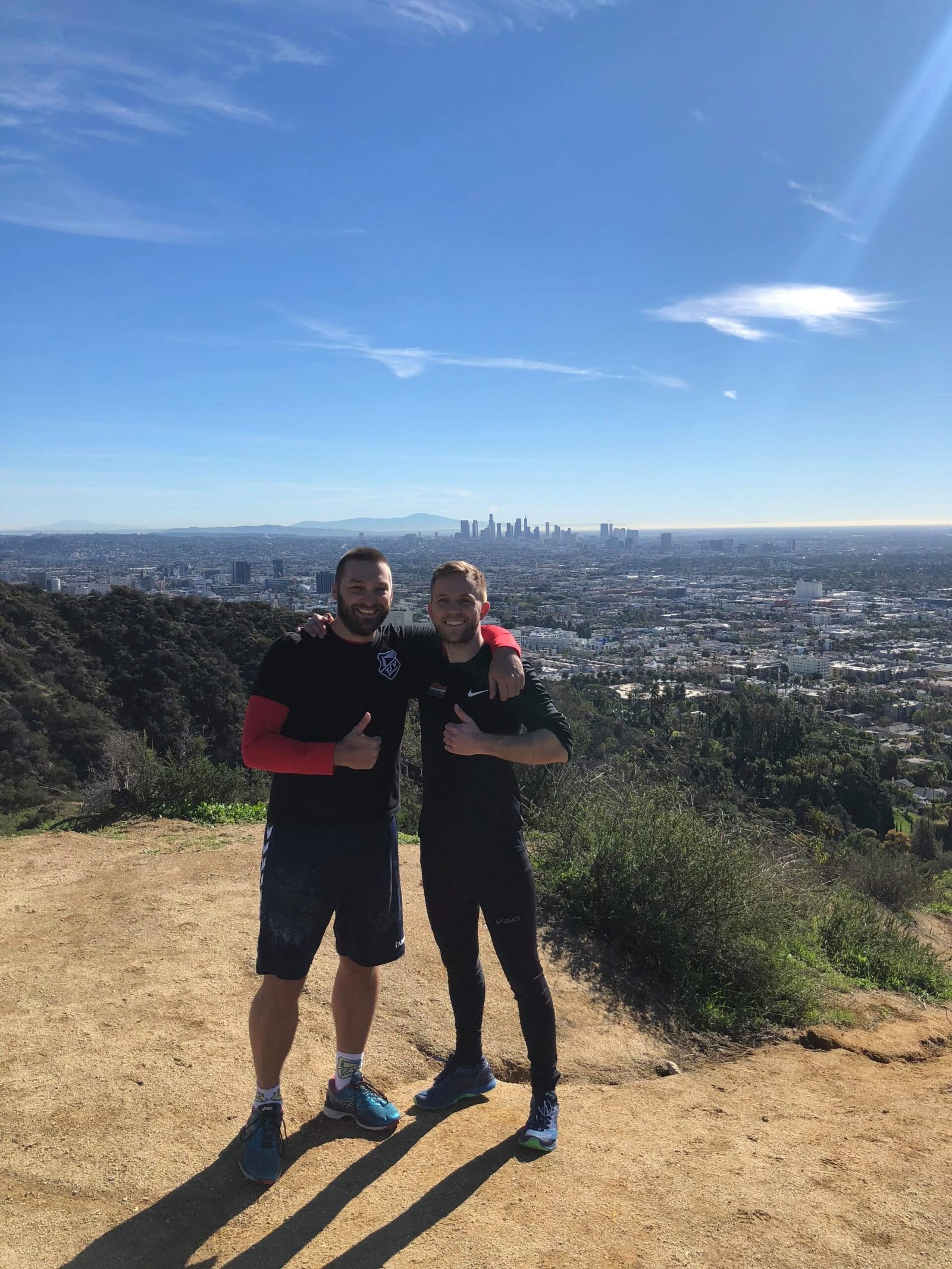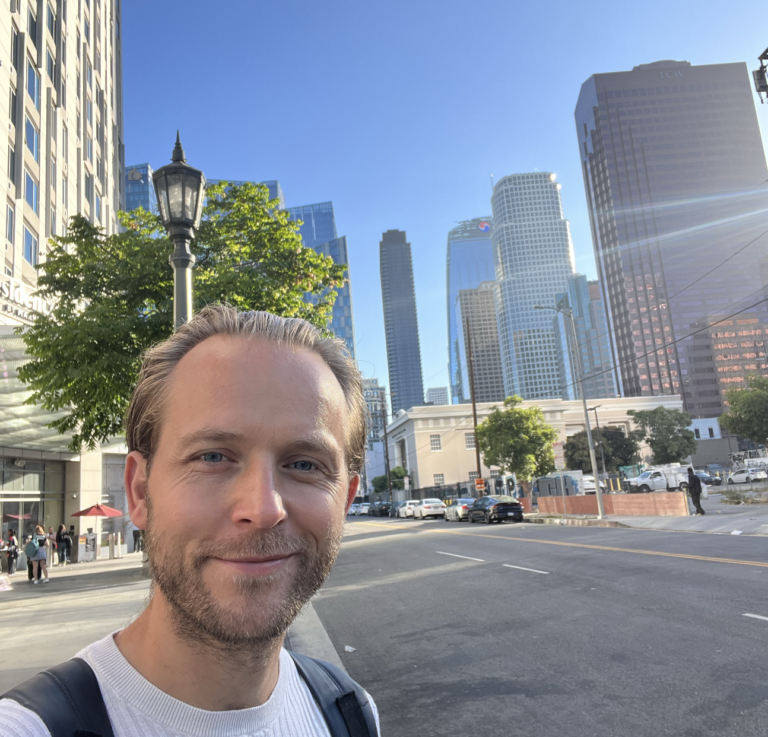Preparing for the EB1 Visa Process: My Plan, Insights, and FAQs
The EB1 visa, also called the “extraordinary ability” visa, is a coveted path for professionals aiming to establish themselves in the U.S. While I haven’t started the process yet, I’m planning to do so in six months and want to share my insights and strategies to help others considering this journey.
Why I’m Considering the EB1 Visa
As an entrepreneur and dreamer, moving to the U.S. was about more than work—it was about betting on myself. While I’ve already navigated the O-1 visa process, the EB1 feels like the ultimate way to solidify my future here. The preparation takes time, but planning ahead has been key to my confidence in this next step.
O-1 to EB1: A Strategic Advantage
If you’ve already gone through the O-1 process, you’re ahead of the game. The criteria for both visas overlap significantly, meaning much of your existing documentation can be reused.
Here’s what I’ve learned so far:
- Shared Evidence
Both visas require proof of extraordinary ability, such as awards, leadership roles, or contributions to your field. Your O-1 documentation might already address many of these. - Restructuring Your Case
While the O-1 focuses on showing that you’re a leading figure in your field, the EB1 requires demonstrating sustained national or international acclaim. The same documents might just need restructuring to emphasize long-term impact. - Adding New Evidence
Strengthening your case with recent achievements and expanded details can make a big difference. Use the time between visas to continue building your portfolio of accomplishments.
Tip: Work with a lawyer who specializes in O-1 to EB1 transitions—they can help ensure your materials are optimally presented for the EB1.
Why the EB1 Visa Matters
The EB1 visa isn’t just a legal document—it’s a life-changing opportunity for individuals who excel in their field. Designed for those with extraordinary abilities, outstanding professors or researchers, and multinational executives, the EB1 offers a streamlined path to U.S. permanent residency.
Freedom
One of the greatest advantages of the EB1 visa is the independence it provides. Unlike many employment-based visas, it doesn’t tie you to a specific employer or require constant renewal. This means you can focus on your career or personal goals without the stress of visa deadlines looming.
Flexibility
For EB1-A applicants, the process doesn’t require a job offer. This independence allows entrepreneurs, artists, researchers, and other high-achieving individuals to pursue opportunities that align with their passions without being tied to a specific role or company.
Path to Citizenship
The EB1 visa leads directly to a green card, making it an attractive option for those aiming for long-term residency in the U.S. Holding a green card means you can work and live in the U.S. with stability, access to benefits, and the eventual opportunity to apply for citizenship.
This combination of freedom, flexibility, and a clear path to citizenship makes the EB1 visa a coveted choice for ambitious individuals. Whether you’re a scientist on the brink of groundbreaking discoveries, a visionary entrepreneur, or an artist redefining your craft, the EB1 can be the key to unlocking a future of possibilities in the United States. It’s not just about staying in the U.S.; it’s about thriving here.
A Timeline for Preparing Your EB1 Case
Navigating the EB1 visa process can seem daunting, but breaking it down into manageable phases can make it more approachable. Here’s a timeline to help you understand what to expect and how to prepare for each step.
Initial Assessment (0–2 Months)
The first step is to assess whether you meet the qualifications for an EB1 visa. If you’re unsure, consult with an immigration lawyer or use free evaluation services offered by law firms. They can give you an initial sense of whether you qualify based on your achievements, such as awards, publications, or significant contributions in your field. This phase is essential to make sure you’re on the right track before investing time and money into the process.
Documentation Collection (3–6 Months)
Once you know you’re eligible, the next phase is collecting the necessary documentation to support your case. Gather evidence such as professional awards, media articles, letters of recommendation, publications, patents, or any other proof that highlights your extraordinary ability in your field. This can take several months, so it’s crucial to get organized and be thorough. Having detailed records of your professional accomplishments will strengthen your petition.
Filing the Petition (6–9 Months)
With your documentation in hand, the next step is filing Form I-140, the immigrant petition for an alien worker. This form is the formal request to the U.S. government to grant you permanent residency based on your extraordinary abilities. You can opt for premium processing at this stage, which expedites the process to just 15 calendar days, providing faster results and helping you plan for the next steps sooner.
Final Steps (10–12 Months)
If your petition is approved, you may be required to attend an interview. Once approved, you can transition to permanent residency, which leads to a green card. This phase marks the culmination of your hard work and preparation, allowing you to live and work in the U.S. with greater freedom and opportunities.
By breaking down the EB1 process into phases, you can stay organized and feel more confident throughout the journey to securing your green card.
Got your EB1 roadmap? Compare it head‑to‑head with EB2’s requirements to pick the best path.

How to Strengthen Your EB1 Application
Improving your chances of a successful EB1 application requires proactive steps to enhance your professional profile. Here are practical strategies to make your case stand out and meet the rigorous requirements for extraordinary ability.
Publish More Work
One of the key criteria for the EB1 visa is demonstrating sustained national or international acclaim in your field. The more high-profile publications you can be a part of, the stronger your application will be. Publish research, articles, or books in well-known journals, magazines, or industry-specific platforms. Being featured in reputable outlets increases the likelihood that USCIS will view your contributions as noteworthy. If you’re in academia or research, consider submitting to peer-reviewed journals with high impact factors. If you’re in business or entertainment, look for collaborations with renowned institutions or media.
Network and Gain Recommendations
Another powerful tool to strengthen your application is securing strong letters of recommendation. Networking with prominent figures in your field can help you earn these essential letters. Aim to connect with individuals who can speak to your accomplishments and provide testimonials of your exceptional contributions. These recommendations carry significant weight, particularly if they come from recognized leaders in your industry. Reach out to industry experts, professors, or even clients who can affirm your impact and achievements.
Continued Learning and Taking Initiative
To further bolster your EB1 case, take roles or initiatives that elevate your profile and showcase your leadership. Whether through teaching, consulting, or taking on high-profile projects, consistently pursuing activities that challenge and expand your expertise demonstrates a long-term commitment to growth. It’s also important to participate in industry conferences, offer workshops, or contribute to innovations that can help position you as a leader in your field.
By publishing more work, building a strong network, and continuously advancing your career, you enhance the evidence supporting your EB1 petition and improve your chances of success.
Comparison: EB1 vs. Other Visa Types
When considering an EB1 visa, it’s essential to understand how it compares to other popular visa options like the O-1 and H-1B. Each visa has its own unique benefits and challenges, so here’s a breakdown of the key differences to help you decide which might be the best fit for your immigration goals.
| Visa Type | EB1 | O-1 | H-1B |
|---|---|---|---|
| Eligibility | Requires proof of extraordinary ability in a specific field | Requires proof of extraordinary ability or achievement in a field | Requires a job offer from a U.S. employer in a specialized field |
| Job Offer | No job offer required (EB1-A) | Job offer required | Job offer required |
| Duration | Permanent residency (green card) once approved | Up to 3 years, renewable | Up to 6 years, renewable (with possible extensions) |
| Processing Time | 10-12 months (with premium processing available) | Typically 2-3 months | Varies, often longer due to lottery system |
| Spouse & Family | Spouse and children (under 21) eligible for green card | Spouse can apply for work authorization | Spouse can apply for work authorization if on H-4 visa |
| Flexibility | No need for employer sponsorship or renewal | Requires employer sponsorship, but more flexible than H-1B | Tied to employer sponsorship; requires renewal and possible re-application each time |
| Path to Citizenship | Direct path to U.S. citizenship after obtaining a green card | Can transition to permanent residency, but not directly | Can transition to permanent residency, but not directly |
Key Differences:
- No Job Offer Needed (EB1): The EB1-A category doesn’t require a job offer, which gives more flexibility compared to the O-1 and H-1B visas, both of which require employer sponsorship.
- Green Card vs. Temporary Work Visa: The EB1 is a direct path to a green card (permanent residency), while both the O-1 and H-1B are temporary work visas. The O-1 may lead to permanent residency, but the process is not as direct as the EB1.
- Processing Time: The EB1 typically takes 10-12 months to process, although premium processing can expedite the process. The O-1 can be processed in 2-3 months, and the H-1B often has a longer waiting time due to the lottery system.
- Flexibility for Family: The EB1 offers immediate green card status for family members, including the spouse and children under 21, while the O-1 and H-1B offer work authorization for spouses but not permanent residency.
Common Challenges with the EB1 Process
The EB1 visa can be a powerful pathway to permanent residency in the U.S., but navigating the process can be challenging. Applicants face various hurdles, such as proving extraordinary ability, gathering sufficient evidence, and dealing with the risk of rejection. Here are some of the most common challenges and tips on how to overcome them.
1. Insufficient Evidence of Extraordinary Ability
One of the biggest challenges with the EB1 visa is meeting the high standard of “extraordinary ability” in your field. Many applicants struggle to gather the necessary documentation to prove their accomplishments. The EB1 requires clear evidence of national or international recognition in your profession, and applicants often wonder whether their achievements qualify.
How to Overcome:
- Diversify Your Evidence: Gather a variety of documents, such as awards, publications, media recognition, and letters of recommendation. The more diverse your evidence, the stronger your case.
- Professional Letters: Obtain strong recommendation letters from well-known figures in your industry who can speak to your accomplishments. These letters should clearly outline your contributions and their significance to your field.
2. Misconceptions about Who Qualifies
A common misconception is that only individuals with extraordinary, world-famous accomplishments, such as Nobel Prize winners, are eligible for the EB1 visa. This can discourage many potential applicants who may have accomplished significant but less widely recognized achievements in their industry.
How to Overcome:
- Clarify Eligibility: You don’t need a Nobel Prize or similar distinction to qualify for an EB1. Instead, focus on demonstrating how your work has impacted your industry. Many successful EB1 applicants have significant accomplishments in their field without global fame.
- Use the Criteria Wisely: The EB1 has specific eligibility criteria (e.g., published material about you, original contributions of major significance). If you meet just a few of the criteria in a compelling way, your case will be stronger. For instance, several published papers or articles in recognized journals can support your application significantly.
3. Risk of Petition Rejection
Even well-documented cases can be rejected if the evidence isn’t compelling or doesn’t meet the visa’s high standards. This risk is frustrating, particularly for individuals who believe they’ve provided enough documentation but still face rejection.
How to Overcome:
- Seek Expert Guidance: Consulting with an EB1 lawyer can help mitigate this risk. Legal professionals can guide you on which evidence to prioritize and how to structure your petition. They can also help with the nuanced task of demonstrating your eligibility under the “extraordinary ability” criteria.
- Prepare for Scrutiny: Immigration officers will closely examine whether the evidence proves your eligibility. Therefore, it’s essential to be meticulous with your documentation, showing how your career or achievements meet the established criteria.
4. Time and Effort
The EB1 application process requires substantial time and effort. Gathering all necessary evidence, obtaining expert recommendations, and preparing a strong petition can be time-consuming. Applicants may underestimate the amount of work required, which could delay the process and lead to frustration.
How to Overcome:
- Start Early: Begin the preparation process well in advance, particularly when it comes to collecting documentation and securing recommendation letters.
- Work with Professionals: Assembling a comprehensive and organized petition can take time, and having a lawyer or consultant with EB1 experience can speed up the process and ensure everything is done correctly.
5. Understanding the Legal Nuances
The EB1 process can be complex, with many legal nuances to consider, such as how to structure your petition and which evidence is most important. Without a clear understanding of U.S. immigration law, applicants may misstep, making the process even more difficult.
How to Overcome:
- Hire a Specialized Lawyer: Hiring a lawyer who specializes in EB1 visas is invaluable. They will be able to help you understand the legal intricacies and craft a petition that maximizes your chances of approval.

Frequently Asked Questions About the EB1 Visa
1. What is the EB1 Visa?
The EB1 is an immigrant visa for individuals with extraordinary abilities, outstanding professors/researchers, or multinational executives and managers.
2. What Are the Key EB1 Categories?
- EB1-A: Extraordinary ability (no job offer required).
- EB1-B: Outstanding professors and researchers (requires a U.S. employer).
- EB1-C: Multinational executives or managers (requires employer sponsorship).
3. What Are the Criteria for EB1-A?
To qualify, you must meet at least 3 of 10 criteria, such as:
- Evidence of awards or recognition.
- Memberships in exclusive organizations.
- Published materials about you.
- Original contributions in your field.
4. Can I Use Premium Processing?
Yes, premium processing is available for EB1 visas, significantly speeding up the review time.
5. Do I Need a Lawyer for EB1?
While it’s not mandatory, a lawyer with EB1 expertise can be invaluable in crafting a strong application and navigating the process.
Lawyer Recommendations for the EB1 Process
Based on my research and what I’ve shared in past articles, here are a few reputable immigration lawyers and services:
- LegalPad
- A tech-forward approach to immigration, with great tools for organizing documents and staying on track.
- Ashoori Law
- Known for personalized guidance and a high success rate for EB1 and O-1 cases.
- North America Immigration Law Group (WeGreened.com)
- Specializes in employment-based visas like the EB1 and offers a free evaluation.
- Murthy Law Firm
- Well-regarded for handling complex visa cases with expertise.
- Fragomen, Del Rey, Bernsen & Loewy
- Global immigration specialists, offering comprehensive support for EB1 applications.
- VisaPro Law Firm
- Provides free consultations and a wide range of immigration services.
Final Thoughts
The EB1 visa process is undoubtedly challenging, but it’s an investment that can significantly impact your future. Whether you’re an academic, artist, researcher, or business professional, the EB1 offers a pathway to permanent residency in the U.S. that doesn’t rely on employer sponsorships or time-limited work visas. For those aiming to establish a long-term future in the U.S., this visa can unlock incredible opportunities.
If you’ve already navigated the O-1 visa, you’re in a great position to transition smoothly to the EB1, as much of the documentation and criteria overlap. That said, the EB1 has its unique demands, and understanding those nuances is crucial to building a strong case. It’s not just about proving extraordinary ability—it’s about strategically demonstrating how your achievements stand out in your field, supported by solid, diverse evidence.

As I begin my own journey toward applying for the EB1 visa, I’ll continue to update my progress. The application process will likely take time, but I plan to share my insights along the way. I’ll cover the successes, struggles, and lessons learned, in hopes that others who are on the same path can benefit from my experience.
Right now, the most important factor in my preparation is ensuring I have the right legal support. Working with an immigration lawyer who specializes in EB1 cases will make all the difference in making this process as smooth as possible. From gathering documentation to structuring the case, their expertise can help avoid costly mistakes and speed up the approval process.
If you’re starting your EB1 journey, I hope the insights I’ve shared so far are helpful. It’s a complex process, but with the right preparation and guidance, it’s definitely achievable. Feel free to share your thoughts or any questions you may have in the comments—I’d love to hear about your experiences and challenges!
Do you have a favorite lawyer or resource you’d recommend? Let me know! I’m always looking for helpful tools or tips from others who’ve successfully navigated the process. Together, we can make this journey more manageable and connect with others on the same path.






